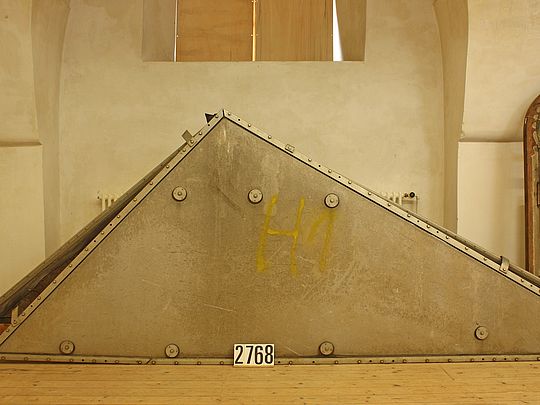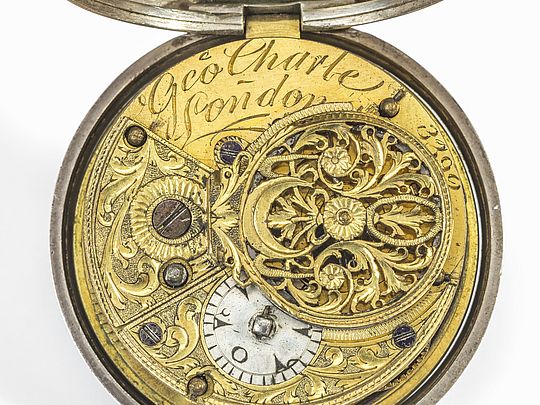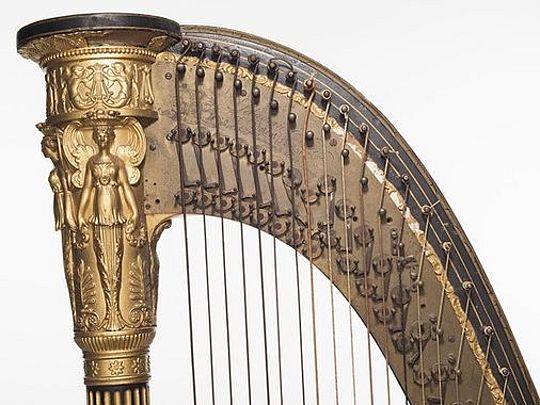

Kasten Illustration (Detail) des Structator Baukastens der Firma Bing, Deutschland, frühes 20. Jh., Deutsches Museum Bild: Artemis Yagou | Artemis Yagou
Material and Production
Wie sie spielten
Konstruktionsspielzeug besteht aus Miniaturbauteilen aus Holz, Keramik, Metall, Kunststoff oder sogar Glas. Erwachsene, die sich von Architektur und Technik inspirieren ließen, schufen diese Bausätze, um Kinder auf angenehme Art und Weise zu erziehen. Wie reagierten Kinder auf solches Spielzeug?
Inhalt
Wie sie spielten: Kinder und Konstruktionsspielzeug (ca. 1840–1940)
Gefördert von
DFG– Deutsche Forschungsgemeinschaft
- Material and Production
- Interrelations between science, technology and society
- Wechselwirkungen zwischen Naturwissenschaft, Technik und Gesellschaft
- Forschung
- Werkstoffe und Produktion
Bearbeitet von
Dr. Artemis Yagou
Scholar in Residence
Projektbeschreibung
Konstruktionsspielzeug aus Museen und Sammlungen und dessen Begleitmaterial wie Verpackungen und Gebrauchsanleitungen bieten die Originalquellen, um die Entstehung der Baukästen von der Mitte des 19. Jahrhunderts bis zum Zweiten Weltkrieg und ihre Bedeutung für die technologische Moderne zu bewerten. Konzeptionell setzt das Vorhaben an der Schnittlinie einer kulturwissenschaftlich orientierten Technikgeschichte mit Design-Geschichte und Geschichte des Spiels an.
Illustration von ‘The Joy the Child Likes Best’, Werbebroschüre der Anker-Richter company, London: Dr. Richter’s Publishing Office, ca. 1893, p. 27, John Johnson Collection of Printed Ephemera, Bodleian Libraries, University of Oxford. Bild: Deutsches Museum
Technologie im Alltag
Das Projekt verwendet eine objektbasierte Methode und rückt verborgene oder vernachlässigte Aspekte der Alltagsgeschichte in den Vordergrund. Das Studium von Baukästen und technologieinspiriertem Spiel trägt zum Verständnis moderner Gesellschaften bei, in denen der technologische Wandel dominiert und Aufregung, Begeisterung, aber auch Angst und Frustration hervorruft.
Die Perspektive der Nutzer
Das Projekt analysiert Baukästen aus der Perspektive der Nutzer, insbesondere der Kinder. Die bisher vernachlässigte und wenig erforschte Perspektive der Kinder wird den Intentionen der Erwachsenen (Eltern, Pädagogen, Designer, Produzenten, Händler) gegenübergestellt. Die Forschung beleuchtet das Verhalten junger NutzerInnen im Vergleich zu den disziplinären und normativen Merkmalen von Baukästen. Das Projekt konzentriert sich auf die Rezeption von technischem Spielzeug und zielt darauf ab, eine relevante Forschungslücke zu schließen. Insgesamt soll das Projektergebnis zum Verständnis der technologischen Moderne, der Auswirkungen des Konsums und der Autonomie des Individuums beitragen.
Vorträge
- Göttingen, Georg-August Uni, »Imagines VII - Playful Classics«, 5-6.03.2021: Playfully Rebuilding the Past: Construction Sets Inspired by Greek Antiquity.
- Salzburg, Universität Salzburg, Tagung »Mit Geschichte spielen: Zur materiellen Kultur von Spielzeug und Spielen als Darstellung der Vergangenheit«, 13.-15.11.2019: Building a Mini-Parthenon: Experiences of Users.
- Kattowitz, University of Silesia, »46th Symposium of ICOHTEC, the International Committee for the History of Technology«, 22.-27.7.2019: Toy Robots: Playing with Humanity’s Fears.
- München, LMU/Museum Mensch und Natur, Interdisziplinäre Tagung »Objects and Organisms. Vivification, Reification, Transformation«, 12.-13.7.2019: Playful Control: The Example of Anthropomorphic Toy Robots.
- München, Oberseminar der Technikgeschichte der TUM und des Forschungsinstituts des Deutschen Museums, 5.11.2018, Technology and Play (DFG Project): Update on Research Directions and Findings.
- London, The Courtauld Institute of Art, »Sites of Interchange: Modernism, Politics, and Culture in Britain and Germany, 1919–1951«, 2.-3.11.2018: Play, Design, Politics: Technical Toys, Design Policies and British-German Exchanges in the First Half of the 20th Century.
- Berlin, Max-Planck-Institut für Bildungsforschung, Workshop »The Multifaceted Relationship between Fear and Technology«, 10.-12.10.2018: Robots and Bricks: Using Play to Cope with a Menacing Technological Future.
- Paris, Maison des Sciences de l’Homme, »ITRA 8th World Conference Toys and Material Culture: Hybridisation, Design and Consumption«, 11.-13.7.2018: Play for the Future Citizen: Shaping Ideal Adults through Construction Toys (19th – 20th c.).
- Birmingham, University of Birmingham, »Transitions: Bridging the Victorian-Modernist Divide«, 9.-10.4.2018: Geometry and Colour across the Victorian-Modernist Divide.
- Philadelphia, SHOT Jahrestagung, 26.-29.10.2017: Technology, Play, Participation: Construction Toys and the Shaping of Ideal Citizens (19th – 20th c.).
- Dundee/St Andrews, University, Centenary Conference »On Growth and Form 100«, 13.-15.10.2017: Where Biology Meets Construction and Play: D’Arcy Thompson and the Continuum of Knowledge.
- Paris, Musée des Arts et Métiers, Artefacts XXII »What Work for What Object? Gestures, Savoir-faire and Body Culture in Museums of Science and Technology«, 8.-10.10.2017: Between Play and Work: Developing Professional Skills and Attitudes through Construction Toys.
- München, Oberseminar der Technikgeschichte der TUM und des Forschungsinstituts des Deutschen Museums, 21.11.2016, Children, Adults, and Technical Toys (ca. 1840–1940): Research Aims and Challenges.
- London, Science Museum Dana Research Centre and Library, Artefacts XXI »Understanding Use: Science and Technology Objects and Users«, 2.-4.10.2016: How did they Play? Children and Construction Sets (ca.1830-1940).
- Porto, Universidade do Porto, »43rd Symposium of ICOHTEC - International Committee for the History of Technology«, 26.-30.7.2016: Shaping the Future through Play: Construction Sets and their Manuals (late 19th-early 20th Centuries).
- Thessaloniki, HELEXPO Nikolaos Germanos Congress Centre, »6th International Conference on Typography and Visual Communication«, 5.-9.7.2016: Visual Propaganda for Children: The Example of Technical Toys.
Veröffentlichungen
- Play, Design, Politics: Technical Toys, Design Policies and British-German Exchanges in the First Half of the Twentieth Century. In: Wasensteiner, L. (Hg.), Sites of Interchange. London (erscheint 2021).
- Building a Mini-Parthenon: Experiences of Users. In: Kühberger, C. (Hg): Mit Geschichte spielen. Bielefeld 2021, 337-353.
- The Other Side of Play: Fear and Frustration in the Design, Consumption, and Use of Construction Sets. In: Journal of Design History 33:3 (2020), S. 193-208.
- More than a Toy Box: Dandanah and the Sea of Stories. In: Bauer, S.; Schlünder, M.; Rentetzi, M. (Hg.): Boxes: A Field Guide. Manchester 2020, S. 202-212.
- Spielerisches Bauen und Konstruieren: Technische Baukästen im Deutschen Museum. In: Kultur &Technik 42 (2018), H. 4, S. 46–51.
- The collection of technical toys in the Deutsches Museum, Munich. In: Design Issues 32:1 (2016), S. 87-92.
- Gürpınar, A.; Yagou, A.; Timur Öğüt, S.: Tactics of Cultural Adaptation: Design and Production Characteristics of Toys in Istanbul. In: The Design Journal 19:3 (2016), S. 451-472.
Weiterführende Links
Webseite
http://www.yagou.gr






